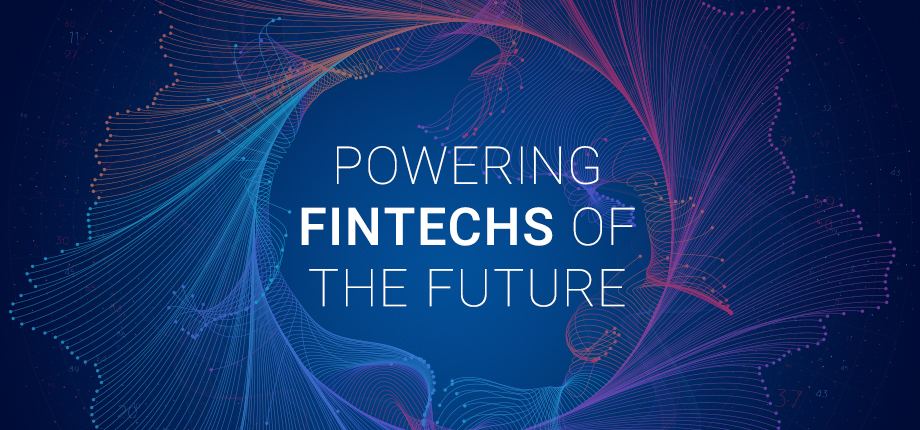Financial Services

Lately, I’ve been surprised by the emphasis that some fraud prevention practitioners still place on manual fraud reviews and treatment. With the market’s intense focus on real-time decisions and customer experience, it seems that fraud processing isn’t always keeping up with the trends. I’ve been involved in several lively discussions on this topic. On one side of the argument sit the analytical experts who are incredibly good at distilling mountains of detailed information into the most accurate fraud risk prediction possible. Their work is intended to relieve users from the burden of scrutinizing all of that data. On the other side of the argument sits the human side of the debate. Their position is that only a human being is able to balance the complexity of judging risk with the sensitivity of handling a potential customer. All of this has led me to consider the pros and cons of manual fraud reviews. The Pros of Manual Review When we consider the requirements for review, it certainly seems that there could be a strong case for using a manual process rather than artificial intelligence. Human beings can bring knowledge and experience that is outside of the data that an analytical decision can see. Knowing what type of product or service the customer is asking for and whether or not it’s attractive to criminals leaps to mind. Or perhaps the customer is part of a small community where they’re known to the institution through other types of relationships—like a credit union with a community- or employer-based field of membership. In cases like these, there are valuable insights that come from the reviewer’s knowledge of the world outside of the data that’s available for analytics. The Cons of Manual Review When we look at the cons of manual fraud review, there’s a lot to consider. First, the costs can be high. This goes beyond the dollars paid to people who handle the review to the good customers that are lost because of delays and friction that occurs as part of the review process. In a past webinar, we asked approximately 150 practitioners how often an application flagged for identity discrepancies resulted in that application being abandoned. Half of the audience indicated that more than 50% of those customers were lost. Another 30% didn’t know what the impact was. Those potentially good customers were lost because the manual review process took too long. Additionally, the results are subjective. Two reviewers with different levels of skill and expertise could look at the same information and choose a different course of action or make a different decision. A single reviewer can be inconsistent, too—especially if they’re expected to meet productivity measures. Finally, manual fraud review doesn’t support policy development. In another webinar earlier this year, a fraud prevention practitioner mentioned that her organization’s past reliance on manual review left them unable to review fraud cases and figure out how the criminals were able to succeed. Her organization simply couldn’t recreate the reviewer’s thought process and find the mistake that lead to a fraud loss. To Review or Not to Review? With compelling arguments on both sides, what is the best practice for manually reviewing cases of fraud risk? Hopefully, the following list will help: DO: Get comfortable with what analytics tell you. Analytics divide events into groups that share a measurable level of fraud risk. Use the analytics to define different tiers of risk and assign each tier to a set of next steps. Start simple, breaking the accounts that need scrutiny into high, medium and low risk groups. Perhaps the high risk group includes one instance of fraud out of every five cases. Have a plan for how these will be handled. You might require additional identity documentation that would be hard for a criminal to falsify or some other action. Another group might include one instance in every 20 cases. A less burdensome treatment can be used here – like a one-time-passcode (OTP) sent to a confirmed mobile number. Any cases that remain unverified might then be asked for the same verification you used on the high-risk group. DON’T: Rely on a single analytical score threshold or risk indicator to create one giant pile of work that has to be sorted out manually. This approach usually results in a poor experience for a large number of customers, and a strong possibility that the next steps are not aligned to the level of risk. DO: Reserve manual review for situations where the reviewer can bring some new information or knowledge to the cases they review. DON’T: Use the same underlying data that generated the analytics as the basis of a review. Consider two simplistic cases that use a new address with no past association to the individual. In one case, there are several other people with different surnames that have recently been using the same address. In the other, there are only two, and they share the same surname. In the best possible case, the reviewer recognizes how the other information affects the risk, and they duplicate what the analytics have already done – flagging the first application as suspicious. In other cases, connections will be missed, resulting in a costly mistake. In real situations, automated reviews are able to compare each piece of information to thousands of others, making it more likely that second-guessing the analytics using the same data will be problematic. DO: Focus your most experienced and talented reviewers on creating fraud strategies. The best way to use their time and skill is to create a cycle where risk groups are defined (using analytics), a verification treatment is prescribed and used consistently, and the results are measured. With this approach, the outcome of every case is the result of deliberate action. When fraud occurs, it’s either because the case was miscategorized and received treatment that was too easy to discourage the criminal—or it was categorized correctly and the treatment wasn’t challenging enough. Gaining Value While there is a middle ground where manual review and skill can be a force-multiplier for strong analytics, my sense is that many organizations aren’t getting the best value from their most talented fraud practitioners. To improve this, businesses can start by understanding how analytics can help group customers based on levels of risk—not just one group but a few—where the number of good vs. fraudulent cases are understood. Decide how you want to handle each of those groups and reserve challenging treatments for the riskiest groups while applying easier treatments when the number of good customers per fraud attempt is very high. Set up a consistent waterfall process where customers either successfully verify, cascade to a more challenging treatment, or abandon the process. Focus your manual efforts on monitoring the process you’ve put in place. Start collecting data that shows you how both good and bad cases flow through the process. Know what types of challenges the bad guys are outsmarting so you can route them to challenges that they won’t beat so easily. Most importantly, have a plan and be consistent. Be sure to keep an eye out for a new post where we’ll talk about how this analytical approach can also help you grow your business. Contact us

If it looks like a bank and acts like a bank, there’s a good chance the company behind that financial services transaction may not actually be a bank – but a fintech. Born out of Silicon Valley, New York and tech hubs in between, fintechs have been categorically unfettered from regulation and driven by a focus on customer acquisition and revenue growth. Today, the fintech market represents hundreds of billions of dollars globally and has been disrupting financial services with the goal of delightful customer experiences and democratizing access to credit and banking. Their success has led many fintechs to update their strategy and growth targets and set their sites outside of core banking to other sectors including payments, alternative lending, insurance, capital markets, personal wealth management, alternative lending and others. Depending on the strategy, many are seeking a bank charter, or a partnership with a chartered financial institution to accomplish their new growth goals. Meanwhile, all this disruption has caught the attention of banks and credit unions who are keen to work with these marketplace lenders to grow deposits and increase fee-revenue streams. Historically, obtaining a bank charter was an onerous process, which led many fintechs to actively seek out partnerships with financial institutions in order to leverage their chartered status without the regulatory hurdles of becoming a bank. In fact, fintech and FI partnerships have boomed in the last few years, growing more than five times over the past decade. Gone are the days of the zero-sum game that benefits solely the bank or the fintech. Today, there are more than 30 partner banks representing hundreds of fintech relationships and financial services. These partnerships vary in size and scope from household names like Goldman Sachs, which powers the Apple credit card, to Hatch Bank, which has $68 million in assets and started with a single fintech partner, HM Bradley.[1] But which scenario is right for your fintech? Much of that depends on which markets and lines of business round out your growth strategy and revenue goals. Regardless of what framework you determine is right for your fintech, you need to work with partners who have access to the freshest data and models and a firm handle on the regulatory and compliance landscape. Experian can help you navigate the fintech regulatory environment and think through if partnering with a bank or seeking your own fintech charter is the best match for your growth plan. In the meantime, check out this new eBook for more information on the bank charter process and benefits, fintech-FI partnerships and the implications of the Office of the Comptroller of the Currency (OCC) new fintech charter. Read now Explore Fintech solutions [1] https://a16z.com/2020/06/11/the-partner-bank-boom/

For credit unions, having the right income and employment verification tools in place helps to create an application process that is easy and low friction for both new and existing members. Digital first is member first The digital evolution created an expectation for online experiences that are simple, fast, and convenient. Attracting and building trusted, loyal relationships and paving the way for new revenue-generating opportunities now hinges on a lender's ability to provide experiences that meet those expectations. At the same time, market volatility and economic uncertainty are driving catalysts behind the need for credit unions to gain a more holistic view of a member’s financial stability. To gain a competitive advantage in today’s lending environment, credit unions need income and employment verification solutions that balance two often polarizing business drivers: member experience and risk management. While verified income and employment data is key to understanding stability, it’s equally important to streamline the verification process and make it as frictionless as possible for borrowers. With these things in mind, here are three considerations to help credit unions ensure their income and employment verification process creates a favorable member experience. The more payroll records, the better Eliminate friction for members by tapping into a network of millions of unique employer payroll records. Gaining instant access into a database of this scale helps enable decisions in real-time, eliminates the cost and complexity of many existing verification processes, and allows members to skip cumbersome steps like producing paystubs. Create a process with high configuration and flexibility Verification is not a one-size-fits-all process. In some cases, it might be advantageous to tailor a verification process. Make sure your program is flexible, scalable and highly configurable to meet your evolving business needs. It should also have seamless integration options to plug and play into your current operations with ease. The details are in the data When it comes to income and employment verification, make sure that you are leveraging the most comprehensive source of consumer information. It’s important that your program is powered by quality data from a wealth of datasets that extend beyond traditional commercial businesses to ensure you are getting the most comprehensive view. Additionally, look to leverage a network of exclusive employer payroll records. With both assets, make sure you understand how frequently the data is refreshed to be certain your decisioning process is using the freshest and highest-quality data possible. Implementing the right solution By including a real-time income and employment verification solution in your credit union’s application process, you can improve the member experience, minimize cost and risk, and make better and faster decisions. To learn more about Experian’s income and employment verification solutions, or for a complimentary demo, feel free to contact an expert today. Learn more Contact us

Earlier this year, we shared our predictions for five fraud threats facing businesses in 2021. Now that we’ve reached the midpoint of the year and economic recovery is underway, we’re taking another look at how these threats can impact businesses and consumers. Putting a Face to Frankenstein IDs: Synthetic identity fraudsters will attempt to bypass fraud detection methods by using AI to combine facial characteristics from different people to form a new identity. Overexposure: As many as 80% of SSNs may have been exposed on the dark web, creating opportunities for account application fraud. The Heist: Surges in data breaches, advances in automation, expanded online banking services and vulnerabilities exposed from social engineering mistakes have lead to rises in account takeover fraud. Overstimulated: Opportunistic fraudsters may take advantage of ongoing relief payments by using stolen data from consumers. Behind the Times: Businesses with lackluster fraud prevention tools and insufficient online security technology will likely experience more attacks and suffer larger losses. To learn more about upcoming fraud threats and how to protect your business, download our new infographic and check out Experian’s fraud prevention solutions. Download infographic Request a call

As stimulus-generated fraud wanes, we anticipate a return of more traditional forms of fraud, including account opening fraud. As businesses embrace the digital evolution and look ahead to responsible growth, it’s important to balance the customer experience with the risks associated with account opening fraud. Preventing account opening fraud requires a layered fraud and identity management strategy that allows you to approve good customers while keeping criminals out. With the right tools in place, you can optimize the customer experience while still keeping risk low. Download infographic Review your fraud strategy

Over the past year and a half, the development of digital identity has shifted the ways businesses interact with consumers. Companies across every industry have incorporated digital services, biometrics, and other verification tools to enhance the consumer experience without increasing risk. Changing consumer expectations A digital identity strategy is no longer a nice-to-have, it’s table stakes. Consumers expect to be recognized across platforms and have a seamless experience every time. 89% of consumers use mobile banking 80% of companies now have a customer recognition strategy in place 55% of banking customers say they plan to visit the bank branch less often moving forward Businesses are responding to these changing expectations while working to grow during the economic recovery – trying to balance consumer experience with risk appetite and bottom-line goals. The present state of digital identity Digital identity strategies require both standardization and interoperability. The first provides the ability to consistently capture data and characteristics that can be used to recognize a specific individual. The second allows businesses to resolve an identity to a specific person – recognizing a phone number, user ID and password, or a device – and use that information to determine if the user of the identity is in fact the identity owner. There are some roadblocks on the road to a seamless digital identity strategy. Issues include a lack of consumer trust and an ambiguous regulatory landscape – creating friction on both ends of the equation. Recipe for success To succeed, businesses need a framework that can reliably use different combinations of physical and digital identity data to determine that the person behind the identity is a known, verified, and unique individual. A one-size-fits-all solution doesn’t exist. However, a layered approach allows businesses to modernize identity, providing the services consumers want and expect while remaining agile in an ever-changing environment. In our newest white paper, developed in partnership with One World Identity, we explore the obstacles hindering digital identity management, and the best way to build a layered solution that is flexible, trustworthy, and inclusive. To learn more, download our “Capturing the Digital Evolution Through a Layered Approach” white paper. Download white paper

Premier Awards Program Recognizes Breakthrough Financial Technology Products and Companies Experian’s Ascend Intelligence Services was selected as a winner of the “Consumer Lending Innovation Award” category in the fifth annual Fintech Breakthrough Awards conducted by Fintech Breakthrough, an independent market intelligence organization that recognizes the top companies, technologies and products in the global fintech market today. The Fintech Breakthrough Awards is the premier awards program founded to recognize the fintech innovators, leaders and visionaries from around the world in a range of categories, including digital banking, personal finance, lending, payments, investments, RegTech, InsurTech and many more. The 2021 Fintech Breakthrough Awards attracted more than 3,850 nominations from across the globe. One of the latest developments on Experian's trusted, award-winning Ascend platform, Ascend Intelligence Services empowers financial services firms with Experian’s revolutionary managed analytics solutions and services, delivered on a modern-tech AI platform. Ascend Intelligence Services includes rapid model development, seamless deployment, optimized decision strategies, ongoing performance monitoring and continuous retraining. The technology-enabled service uses a secure cloud-based AI platform to harness the power of machine learning, and deliver unique capabilities covering the entire credit lifecycle, through an easy-to-use web portal. “To stay ahead of the latest economic conditions, fintechs need high-quality analytical models running on large and varied data sets that empower them to act quickly and decisively. The breakthrough Ascend Intelligence Services platform answers this immediate market need,” said James Johnson, Managing Director, Fintech Breakthrough. “Congratulations to Experian and the Ascend team on winning our ‘Consumer Lending Innovation Award’ for 2021 with this game-changing solution.” “Data scientists are spending too much time on manual, repetitive and low value-add tasks, and organizations cannot afford to do this is in a state of constant change,” said Srikanth Geedipalli, Experian’s SVP Global Analytics/AI Products. “While building and deploying high-quality analytical models can be time-consuming and expensive, Ascend Intelligence Services streamlines this process by harnessing the power of machine learning and Experian’s rich data assets to drive better, faster and smarter decisions. We have been able to deliver analytical solutions to clients up to 4X faster, significantly improving decision automation rates and increasing approval rates by double digits. We are proud that Ascend Intelligence Services is being recognized as a breakthrough solution in the 2021 Fintech Breakthrough Awards program,” he said. Ascend Intelligence Services is comprised of four modules: Ascend Intelligence Services Challenger™ is a powerful, dynamic and collaborative model development service that enables Experian to rapidly build a model and quantify the benefit to business. Businesses can review, comment on and approve the model, all from within the web portal, while it’s being built. The resulting score is available for testing through an API endpoint and can be deployed in production with a few easy steps. Reports are customizable, downloadable and regulatory compliant. Ascend Intelligence Services Pulse™ is a proactive model monitoring and validation service, which aids companies in monitoring the health of models that drive their business decisions. Pulse, provides convenient dashboards that include a model health index, performance summary, stress-testing results, model risk management reporting, model health alerts and more. Additionally, Pulse automatically builds challengers for champion models, providing an estimated performance lift and financial benefit. Ascend Intelligence Services Strategy Advance™ is a powerful business strategy development service, enabling clients to make optimal lending decisions on their applicants. Strategy Advance uses Experian’s powerful optimization engine to build the right credit policy for clients, including sophisticated decision rules, model overlays and client specified knock-out rules. The resulting decision is available for testing through an API endpoint and can be deployed in production with a few easy steps. Ascend Intelligence Services Limit™ is a credit limit optimization service, enabling clients to make the right credit limit decisions at account origination and during account management. Limit uses Experian’s data, predictive risk and balance models and our powerful optimization engine to design the right credit limit strategy that maximizes product usage, while keeping losses low. The limit decision is available for testing through an API endpoint and can be deployed in production with a few easy steps. To learn more about how Ascend Intelligence Services can support your business, please explore our solutions page. Learn more For a list of all award winners selected for the Fintech Breakthrough Awards, read the full press release here.

The pandemic changed nearly everything – and consumer credit is no exception. Data, analytics, and credit risk decisioning are gaining an even more significant role as we grow closer to the end of the global crisis. Consumers face uneven roads to recovery, and while some are ready to spend again, others are still dealing with pandemic-related financial stress. We surveyed nearly 9,000 consumers and 2,700 businesses worldwide about how consumers are stabilizing their finances and businesses are returning to growth for our new Global Decisioning Report. In this report, we dive into: Key business priorities in 2021 Financial concerns for consumers How to navigate an uneven recovery Business priorities for the year ahead The importance of the online experience As we begin to near the end of the pandemic, businesses need to prioritize technology that enables a responsive, flexible, efficient and confident approach. This can be done by leveraging advanced data and analytics and integrating machine learning tools into model development. By investing in the right credit risk decisioning tools now, you can help ensure your future. Download the report

As quarantine restrictions lift and businesses reopen, there is still uncertainty in the mortgage market. Research shows that more than two million households face foreclosure as moratoriums expire. And with regulators, like the Consumer Financial Protection Bureau (CFPB), urging mortgage servicers to prepare for an expected surge in homeowners needing assistance, lenders need the right resources as well. One of the resources mortgage lenders rely on to help gain greater insight into their borrower’s financial picture is income and employment verification. The challenge, however, is striking the right balance between gaining the insights needed to support lending decisions and creating a streamlined, frictionless mortgage process. There are three main barriers on the path to a seamless and digital verification process. Legacy infrastructure Traditional verification solutions tend to rely on old technology or processes. Whether a lender’s verification strategy is centered around a solution built on older technology or a manual process, the time to complete a borrower verification can vary from taking a day to weeks. Borrowers have grown accustomed to digital experiences that are simple and frictionless and experiencing a drawn out, manual verification process is likely to impact loyalty to the lender’s brand. Stale employment and income data The alternative to a manual process is an instant hit verification solution, with the aim to create a more seamless borrower experience. However, lenders may receive stale borrower income and employment data back as a match. Consumer circumstances can change frequently in today’s economic environment and, depending on the data source the lender is accessing, data may be out of date or simply incorrect. Decisioning based on old information is problematic since it can increase origination risk. Cost and complexity Lenders that use manual processes to verify information are adding to their time to close and ultimately, their bottom line by way of time and resources. Coupled with pricing increases, lenders are paying more to put their borrowers through a cumbersome and sometimes lengthy process to verify employment and income information. How can mortgage lenders avoid these common pitfalls in their verification strategy? By seeking verification solutions focused on innovation, quality of data, and that are customer-centric. The right tool, such as Experian VerifyTM, can help provide a seamless customer experience, reduce risk, and streamline the verification process. Learn more

Fintechs have been an enormously disruptive force of change in financial services over the past 10 years. From digital payments, lending, insurance, digital banks, to personal finance and many other subsectors in between, fintechs have rapidly transformed everything from business and operating models to customer expectations. It’s this innovative drive that is celebrated and fostered each year at LendIt Fintech - a conference that brings together the fintech and financial services community to connect and reimagine the future of finance. And there may not be another year on record that called for the reimagining of finance more than 2020. Last year, the financial services industry – from consumers, fintechs and other subdivisions across the globe – endured many changes and challenges due to the COVID-19 pandemic. But it also brought accelerated innovations; and with them, increased customer expectations and a focus on financial equity and inclusion. As consumer credit scores and demand for credit continue to rise, fintechs have an opportunity to re-examine what credit looks like in a post-COVID lending environment, and explore opportunities for growth in 2021. Experian’s Chief Product Officer Greg Wright tackled this topic at the recent Lendit Fintech conference, alongside Ibo Dusi of Happy Money, Myles Reaz of Upgrade and the Garry Reeder with the American Fintech Council. Watch the full panel discussion in the video below and hear more about: How panelists define data, alternative data and how it factors in their lending How alternative data can help drive financial inclusion and get to a ‘yes’ more often with consumers Using data to make the consumer experience more frictionless and seamless For more information about how Experian can help fintech organizations of all sizes reach their business and lending goals, visit our fintech solutions page. Explore Experian's Fintech Solutions

The COVID-19 pandemic has created shifting economic conditions and rapidly evolving consumer preferences. Lenders must keep up by re-evaluating their strategies to accelerate growth and beat the competition. Here's how AI/ML can help your organization evolve post-COVID-19: With the democratization of AI/ML, lenders of all sizes can now use this technology to grow their lending and optimize for strategic growth. Register for our upcoming webinar to see how lenders like Elevate have incorporated this new technology into their business processes. Register now

Experian recently announced its expansion into Employer Services and the release of a new suite of real-time income and employment verification products, Experian Verify™. The COVID-19 pandemic amplified lenders' need for deeper insights into a consumer's financial situation. At the same time, employers were flooded with record-breaking unemployment claims, while managing stay-at-home orders, income and employment verification fulfillment requests, and more. "We're committed to helping employers, businesses, lenders, and consumers on the road to recovery from the pandemic and beyond," said Alex Lintner, Group President Experian Consumer Information Services. "To support this, we're building two businesses: Experian Employer Services and Verification Solutions. These businesses will create meaningful change and provide our clients with competitive options to achieve their verification needs while helping improve access to credit for consumers." With Experian Verify, lenders can quickly and easily create a more complete picture of a consumer's financial situation by verifying an applicant's income and employment status. Powered by our growing network of payroll and proprietary employer data, Experian Verify offers lenders flexible and secure access to income and employment records. With a consumer's consent, lenders can request the information from Experian and an income and employment report can be delivered to lenders through an API, online Experian dashboard, or paired with an Experian credit report. "As we begin to recover from the COVID-19 pandemic and employers are reopening their doors, we're confident we have assembled the best-of-the-best to help employers overcome their toughest challenges. We're committed to leveraging our combined capabilities and focus on high-touch customer service to deliver secure, scalable and transparent services to employers," said Michele Bodda, President of Experian Mortgage, Employer Services and Verification solutions. Visit us for more information on Experian Verify and Experian's Employer Services. Contact us

For credit unions of all sizes, choosing a strategic partner with the right tools, capabilities, and industry expertise to support growth while minimizing expenses is a decision critical to the bottom line. This is especially important, since the goal of achieving sustainable growth has continued to be a trending topic for credit unions since the start of the pandemic. According to this CU Times analysis of NCUA data, the fourth quarter of 2020 showed that high overhead per assets was the main factor holding down net income, and credit unions with less than $1 billion in assets fared the worst. These high overhead costs kept margins low and served to be a key contributing factor in gauging a credit union’s profitability. Overcoming this problem lies not only in improving operational efficiency, but in seeking out partners that can provide innovative insight and “right-sized,” scalable solutions to help credit unions effectively grow at a strategic pace. The less money a credit union spends earning each dollar, the more operationally efficient and resource-savvy it becomes—which in turn generates more value for both the credit union and its members. So how can a credit union successfully assess a potential partner’s ability to help them achieve goals for sustainable growth? Asking three key questions can reveal a potential partner’s operational prowess and their ability to understand and offer the right solutions tailored for an individual credit union’s need. Minimize Overhead with a Partner Who Can Help Accelerate and Support Sustainable Growth: Evaluation Questions to Ask 1. Does my potential partner offer solutions to ease the strain on staff, or help automate time-consuming, repetitive tasks and processes? Automation is not only for large credit unions. Employees at credit unions with $4 billion and less in assets often wear many hats and manage the full spectrum of credit activities, leaving leaders to ponder how much time staff is spending on rote, manual tasks throughout the end-to-end member lifecycle. As a result, credit unions are turning to automated decisioning to streamline repetitive tasks and meet increasing member expectations, while also reducing risk. To drive sustainable growth, credit unions will want to look at current processes as a means of measuring efficiency. Can existing programs handle growth to scale in all areas of the business? How can digital lending automation be increased and free up more time for staff to focus attention where it is needed most, such as high-value engagements with members and delivering a personalized member experience? Can self-service tools save your credit union valuable time and increase employee satisfaction? 2. Does my potential partner have access to the right data, advanced analytics and technology to help optimize credit decisioning? As credit unions consider different ways to minimize overhead and accelerate growth, the last few years have shown that automation, coupled with advanced analytics and technology, has taken on a second wave of focus and intense interest. A significant opportunity pertaining to automation is supporting decisioning throughout the member lifecycle, again, eliminating the need for manual processes that cannibalize time and resources. For example, access to advanced analytics and data at the onset of account acquisition can quickly inform a lender as to whether a new account should be approved or declined. Furthermore, it also presents an opportunity to lend deeper. Credit unions can leverage expanded datasets to perform an analysis on rejected applicants and make more predictive decisions – leading to incremental loans. Additionally, lenders have identified other areas where automated decisioning could speed up processes that once required manual evaluation – from account and portfolio management, to marketing and prescreening efforts, to managing early and late-stage delinquent accounts. By leveraging a partner who can support optimizing credit decisioning with the freshest data and analytics, credit unions can routinely and consistently be sure they’re making the right offers and decisions to the right customer at the right time. 3. Does my potential partner offer digital-first strategies and solutions that help reduce friction and improve the member experience? More and more members are interacting and engaging with their credit unions via digital channels. To meet their demands, credit unions – who have historically prioritized other initiatives over digital transformation– are quickly pivoting and rethinking their digital strategy to offer best-in-class digital banking and borrowing experiences, while also reducing friction. Part of this strategy includes smart, easy and well-designed applications that support sustainable growth simply by streamlining offers and reducing abandonment. When considering a potential partner, take into consideration their ability to assist with digital-first solutions, including: Real-time income and employment verification, and fraud tools to quickly and accurately confirm important factors, including the legitimacy of members, and streamline the borrowing process with minimal friction. Instant prescreen, self-service prequalification and instant credit to offer fast, easy, and convenient real-time credit decisions for members. Additionally, improving lending economics with a digital-first pre-qualification tool can not only better serve members, but also drive more apps and grow loans. Artificial intelligence, machine learning and other innovative technologies to enhance underwriting and decrease both hard inquiries on applications and the need for extensive underwriter review. Prequalification tools powered by innovative technology solutions can lead to efficient use of underwriter resources and act as a filter in front of the LOS to remove unqualified applications from hard inquiries. Technology that integrates with multiple lending and core systems and delivers solutions that integrate with multiple systems and channels. For example, to help improve conversion, the borrower experience can be offered a simple application that is designed to “get to offer” as fast as possible. This helps reduce abandonment. The process can be further streamlined by integrating data sources for ID verification, auto fill assistance and adding integrations with existing lending and core systems. To learn more about Experian and how our solutions can support and grow your credit union, contact us now. Contact Us

To grow in today’s economic climate and beat the competition, financial institutions need to update their acquisition and cross-sell strategies. By doing so, they are able to drive up conversions, minimize risk, and ultimately connect consumers with the right offers at the right time. Businesses and consumers are spending more time online than ever before, with 40% of consumers increasing the number of businesses they visit online. They’ve also made it clear that they expect easy, frictionless transactions with their providers. This includes new accounts and offers of credit – creating the need for better delivery systems. Effective targeting and conversion come down to more than just direct mail and email subject lines, especially now in a volatile economy where consumers are seeking appropriate products for their current situation. Be the first to meet consumers’ needs by leveraging the freshest data, advanced analytics, and automated decision systems. For example, when a consumer tries to open a checking account, the system can initiate a “behind-the-scenes” real-time prescreen request while assessing information needed to open the deposit account. The financial institution can then see if the consumer qualifies for overdraft protection, refinancing offers, loans, credit cards, and more. By performing the pre-approval process in seconds, financial institutions can be sure that they're making the right offers to the right customer, and doing it at the right time. All of this helps to increase the offer acceptance rate, improving customer retention, and maximizing customer account life-time value. The pandemic upended a lot of the ways that your businesses run day-to-day – from where you work to how you (better) engage with customers. Arguably, some of the changes have been long overdue, particularly the acceleration to digital and better customer acquisition strategies. Ahead lies the opportunity to grow – strategies enacted now will determine the extent of that opportunity. To learn more about how Experian can help you assess your prescreen strategy and grow, contact us today. Request a call

In today’s digital-first environment, fraud threats are growing in sophistication and scope. It’s critical for credit unions to not only understand the specific threats presented by life online, but to also be prepared with a solid fraud detection and prevention plan. Below, we’ve outlined a few fraud trends that credit unions should be aware of and prepared to address. 2021 Trends to Watch: Digitization and the Movement to Life Online Trend #1: Digital Acceleration As we look ahead to the rest of 2021 and beyond, we expect to see adoption of digital strategies nearing the top of credit unions’ list of priorities. Members’ expectations for their digital experience have permanently shifted, and many credit unions now have members using online channels who traditionally wouldn’t have. This has led to a change in the types of fraud we see as online activities increased in volume. Trend #2: First-Party Fraud is On the Rise First party fraud is on the rise – 43% of financial executives say that mule activity is up 10% or more compared to attack rates prior to the pandemic, according to Trace Fooshee, Senior Analyst for Aite Group, and we expect to see this number grow. The ability for credit unions to identify and segregate the “good guys” from “bad guys” is getting more difficult to discern and this detail is more important than ever as credit unions work to create frictionless digital experiences by using digital tools and strategies. Trend #3: Continual Uptick in Synthetic Identity Fraud We expect synthetic identity fraud (SID) to continue to rise in 2021 as cybercriminals become more sophisticated in the digital space and as members continue with their new digital habits. Additionally, fraudsters can use SIDs to bring significant damage and loss to credit unions through fraudulent checks, debit cards, person-to-person and automated clearing house (ACH) transactions. More and more, fraudsters are seen opening accounts and remaining very patient – using an account to build and nurture a trusted relationship with the credit union and then remain dormant for two years before ensuing in any sort of abuse. Once the fraudster feels confident that they can bypass authentication processes or avoid a new product vetting, oftentimes, they will take that opportunity to get easy access to all solutions credit unions have available and will abuse them all at once. There are no signs of fraud slowing, so credit unions will need to stay vigilant in their fraud protection and prevention plans. We’ve outlined a few tips for credit unions to help protect member data while reducing risk. The Fight Against Fraud: Four Key Tips Tip #1: Manage Each Fraud Type Appropriately Preventing and detecting fraud requires a multi-level solution. This can involve new methods for authenticating current and prospective members, as well as incorporating synthetic identity services and identity proofing throughout the member lifecycle. For example, credit unions should consider taking extra verification steps during the account opening process as a preventative measure to minimize SID infiltration and associated fraud losses. As credit unions continue down the path of digitization, it’s also important to add in digital signals and behavior-based verification, such as information about the device a consumer is logging in from to heighten defenses against bad actors. Tip #2: Be Resourceful In the wake of the COVID-19 pandemic, many have asked, “How should credit unions approach fraud prevention tactics when in-person contact is limited or unavailable?” In some cases, you might need to be willing to say no to requests or get creative and find other options. Sometimes, it takes leveraging current resources and using what’s readily available to allow for a binary decision tree. For example, if you’re suspicious of a dormant account that you think could be synthetic, call them, and ask yourself these questions: Did they answer? Was the phone still active? Send the account holder an email – did you get a reply? Is this a new member? Is this a new channel for the member? Could they have logged on to do this instead of calling the call center? Tip #3: Empower Members Through Education Members like to know that their credit unions are taking the necessary steps and applying the right measures to keep their data secure. While members might not want every detail, they do want to know that the security measures are there. Require the use of strong passwords, step-up authentication, and empower members with alerts, notifications, and card controls. Additionally, protect members by providing resources like trainings, webinars, and best practices articles, where they can learn about current cyber trends and how to protect their data. Tip #4: Trust Data Many credit unions rely on an employee’s decision to decide when to take action and what action to take. The challenge with this approach comes when the credit union needs to reduce friction for members or tighten controls to prevent fraud, because it’s extremely hard to know exactly what drove prior actions. A better alternative is to rely on scores and specific data. Tweaks to the scores or data points that drive actions allow credit unions to achieve the desired member experience and risk tolerance – just be sure to leverage internal experts help figure out those policies. By determining what conditions drive actions before the actions are taken (instead of doing it one case at a time) the decisions remain transparent and actionable. Looking for more insights around how to best position your credit union to mitigate and prevent fraud? Watch our webinar featuring experts from around the industry and key credit unions in this Fraud Insight Form hosted by CUES. Watch now Contact us